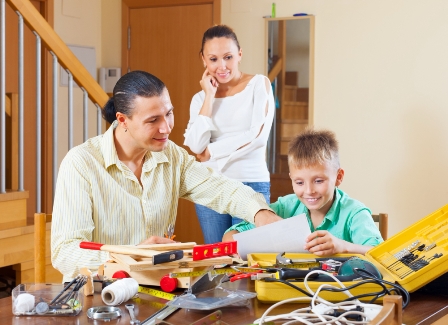Electrical safety is a crucial aspect of maintaining a secure home environment, and it becomes even more critical when it comes to children. Teaching kids about the potential risks associated with electricity not only safeguards them but also instills lifelong safety habits. In this article, we will delve into the various aspects of electrical safety for kids, covering essential topics to ensure a comprehensive understanding.
Understanding Electricity
Basic Concepts
Before educating children about electrical safety, it’s important to establish a fundamental understanding of electricity. Explaining concepts like circuits, currents, and voltages in simple terms lays the foundation for more effective safety education.
Potential Risks
Highlighting the potential dangers associated with electricity, such as electrical shocks and burns, creates awareness and emphasizes the need for caution.
Common Electrical Hazards at Home
Power Outlets and Cords
Children are naturally curious, and power outlets can be tempting targets for exploration. Implementing childproofing measures and teaching kids about the dangers of inserting objects into outlets is essential.
Appliances and Electronics
Ensuring that children are aware of the risks posed by appliances and electronic devices helps them develop responsible habits. Teaching them to avoid using electrical devices with wet hands is a key safety lesson.
Water and Electricity
Educating children about the dangers of mixing water and electricity is crucial. Simple lessons on not touching electrical appliances with wet hands can prevent accidents.
Teaching Kids about Electrical Safety
Age-Appropriate Lessons
Tailoring the lessons based on the age of the child ensures better comprehension. Younger children may benefit from simple rules, while older ones can grasp more complex safety concepts.
Interactive Learning Activities
Engaging children through interactive activities like games and simulations makes the learning process enjoyable and memorable.
Creating a Safe Home Environment
Childproofing Outlets
Installing outlet covers and securing cords helps in childproofing the home. This proactive measure minimizes the risk of electrical accidents.
Managing Cords and Wires
Teaching children to avoid playing with cords and wires reduces the likelihood of accidents. Organizing and securing cables also contribute to a safer environment.
Educating on Appliance Safety
Providing insights into the safe use of household appliances fosters responsible behavior. Emphasizing the importance of turning off appliances when not in use is a simple yet effective safety tip.
Importance of Supervision
Outdoor Electrical Safety
Supervising children during outdoor activities ensures they are cautious around potential electrical hazards like power lines and outdoor outlets.
Indoor Electrical Safety
Monitoring indoor activities helps in preventing accidents related to appliances and electronics. It also allows for immediate intervention if unsafe behavior is observed.
Role of Schools in Electrical Safety Education
Curriculum Integration
Including electrical safety in school curricula ensures that children receive consistent education on the topic. Regular lessons and drills reinforce safety habits.
Safety Drills
Conducting safety drills familiarizes children with emergency procedures, enabling them to respond effectively in case of electrical emergencies.
Recognizing Signs of Electrical Danger
Smell
Teaching children to recognize unusual smells, especially burning odors, associated with electrical issues helps in early detection.
Sounds
Educating kids about unusual sounds such as buzzing or crackling can serve as an early warning sign of potential electrical problems.
Sparks or Smoke
Instilling the importance of immediately reporting any sparks or smoke helps in addressing electrical issues promptly.
Emergency Response
Contacting Emergency Services
Teaching children how to contact emergency services in case of electrical emergencies empowers them to take quick and appropriate action.
Basic First Aid for Electrical Injuries
Providing basic first aid training, such as how to respond to electrical shocks, prepares children to assist others and themselves in emergencies.
Technology and Electrical Safety
Internet Safety
Connecting the concept of electrical safety to the use of electronic devices, including computers and smartphones, reinforces a holistic approach to safety education.
Safe Use of Electronic Devices
Guiding children on responsible and safe use of electronic devices prevents not only electrical accidents but also potential online risks.
Engaging Children with Safety Campaigns
Public Awareness Initiatives
Participating in or organizing public awareness campaigns educates children beyond the home, fostering a community-wide commitment to electrical safety.
Community Events
Involving children in community events focused on safety creates a sense of responsibility and community awareness.
Benefits of Early Electrical Safety Education
Injury Prevention
The primary benefit of early electrical safety education is injury prevention. Equipping children with knowledge and awareness significantly reduces the likelihood of accidents.
Lifelong Safety Habits
Instilling safety habits from a young age contributes to the development of lifelong practices, ensuring that children carry these lessons into adulthood.
Frequently Asked Questions (FAQs)
Installing outlet covers and using childproof plugs are effective measures to childproof outlets.
For younger children, focus on simple rules like not touching outlets, while older kids can learn about circuit basics.
Unusual smells, sounds, sparks, or smoke are indicators of potential electrical issues.
Call emergency services immediately and, if safe, disconnect the power source. Administer basic first aid until help arrives.
Schools can integrate electrical safety into their curriculum and conduct regular safety drills.
Conclusion
Educating children about electrical safety is not just a precautionary measure; it’s an investment in their well-being. By imparting essential knowledge and fostering responsible habits, we create an environment where kids can thrive safely. Remember, a little education goes a long way in ensuring a secure and electrifying future for our children.


